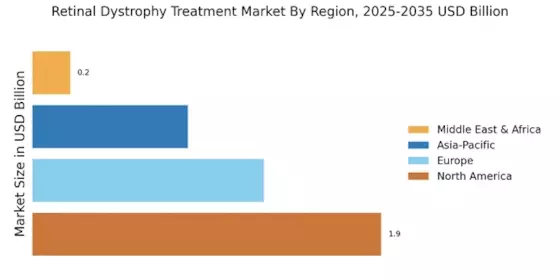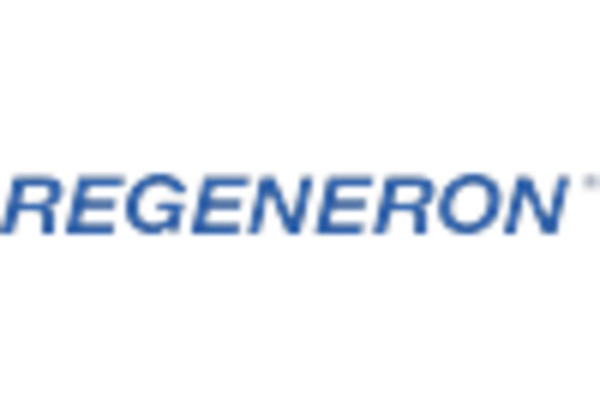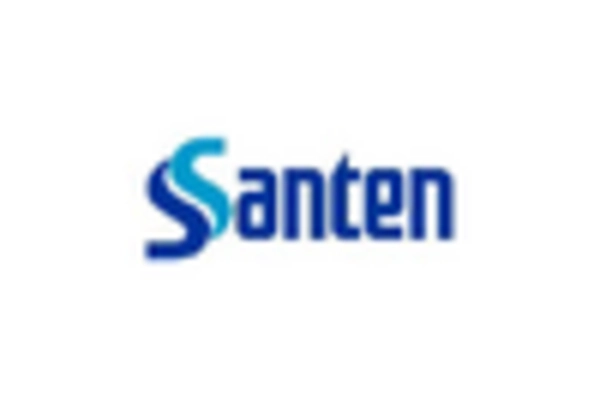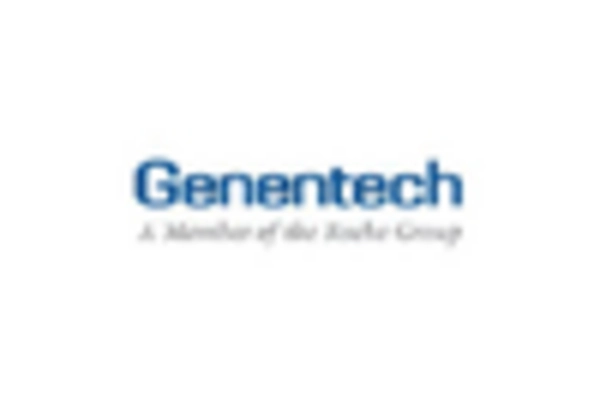Advancements in Biotechnology
Technological advancements in biotechnology are significantly influencing the Retinal Dystrophy Treatment Market. Innovations such as CRISPR gene editing and stem cell therapy are paving the way for new treatment modalities that could potentially reverse or halt the progression of retinal dystrophies. The market is witnessing an influx of clinical trials aimed at evaluating the efficacy of these cutting-edge therapies. For instance, several gene therapy products are currently in late-stage clinical trials, with some expected to receive regulatory approval in the near future. This influx of novel therapies is likely to enhance treatment options available to patients, thereby driving market growth. Furthermore, the integration of artificial intelligence in drug discovery processes may expedite the development of targeted therapies, further propelling the Retinal Dystrophy Treatment Market.
Rising Awareness and Advocacy
There is a growing awareness and advocacy surrounding retinal dystrophies, which is positively impacting the Retinal Dystrophy Treatment Market. Patient advocacy groups and organizations are playing a pivotal role in educating the public and healthcare professionals about these conditions. Increased awareness leads to earlier diagnosis and treatment, which is essential for improving patient outcomes. Moreover, these organizations often collaborate with researchers and pharmaceutical companies to promote clinical trials and new therapies. The heightened visibility of retinal dystrophies is likely to drive demand for innovative treatments, as patients become more informed about their options. This trend suggests a dynamic shift in the market landscape, as stakeholders respond to the needs of an increasingly educated patient population within the Retinal Dystrophy Treatment Market.
Growing Investment in Ophthalmic Research
The Retinal Dystrophy Treatment Market is experiencing a surge in investment from both public and private sectors, aimed at advancing ophthalmic research. Funding initiatives from government agencies and non-profit organizations are increasingly directed towards understanding the genetic and molecular underpinnings of retinal dystrophies. This financial support is crucial for fostering innovation and facilitating the development of new therapeutic approaches. In recent years, the total funding for retinal research has seen a notable increase, with millions allocated to various projects focused on gene therapy and regenerative medicine. Such investments not only enhance the scientific understanding of these conditions but also stimulate the market by attracting pharmaceutical companies to develop and commercialize new treatments. This trend indicates a promising future for the Retinal Dystrophy Treatment Market.
Regulatory Support for Innovative Therapies
Regulatory bodies are increasingly supportive of innovative therapies for retinal dystrophies, which is a key driver of the Retinal Dystrophy Treatment Market. Initiatives such as the FDA's Breakthrough Therapy Designation and the European Medicines Agency's Priority Medicines scheme are designed to expedite the development and approval of promising treatments. These regulatory frameworks encourage pharmaceutical companies to invest in research and development, knowing that their innovative therapies may receive faster access to the market. As a result, several gene therapies and novel treatment modalities are currently under review, with the potential to transform the treatment landscape for retinal dystrophies. This supportive regulatory environment is likely to foster a more vibrant and competitive market, ultimately benefiting patients and healthcare providers within the Retinal Dystrophy Treatment Market.
Increasing Prevalence of Retinal Dystrophies
The rising incidence of retinal dystrophies, including conditions such as retinitis pigmentosa and Stargardt disease, is a primary driver of the Retinal Dystrophy Treatment Market. Recent estimates suggest that these disorders affect approximately 1 in 4,000 individuals, leading to a growing patient population in need of effective treatments. As awareness of these conditions increases, more individuals are seeking medical attention, thereby expanding the market. The demand for innovative therapies, including gene therapies and retinal implants, is likely to surge as healthcare providers aim to address the unmet needs of patients. This trend indicates a robust growth trajectory for the Retinal Dystrophy Treatment Market, as stakeholders invest in research and development to create novel solutions for these debilitating conditions.


















Leave a Comment